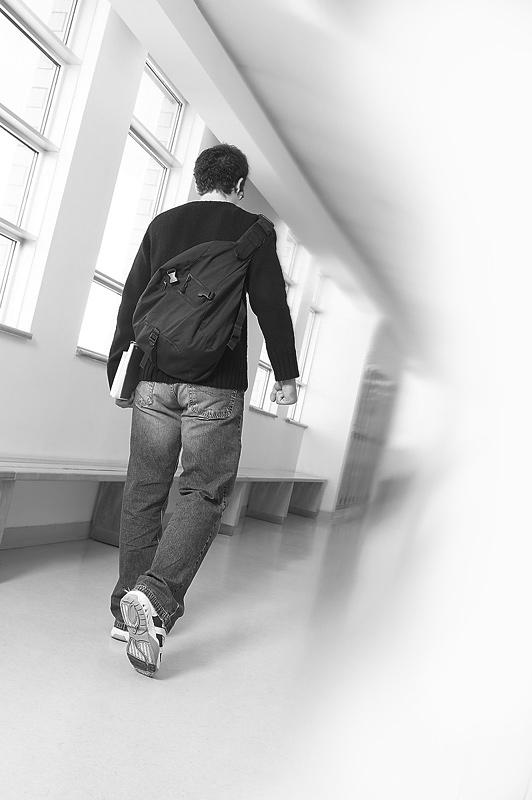
2 minute read
COLUMN: Greeks HEALTH: Backpacks and your back
Student HEalth Heavy Bags Could Lead to Aching Backs
Working at laptops and sitting for hours in classes are culprits as well
Advertisement
By Tanika Cooper U-WIRE – Daily Nebraskan
LINCOLN, Neb. – Buying books at the beginning of the year can be a pain in the neck – literally.
As students begin classes and tote around their texts, they could be creating unnecessary strain on their bodies.
Jane Austin, a physical therapist at the University Health Center at the University of Nebraska-Lincoln, said students should not carry backpacks that weigh more than 10-15 percent of their body weight.
“Even then, you shouldn’t try to carry anything over 10 percent of your body weight – just to be safe,” Austin said.
For an average 140-pound woman, this means a backpack should weigh no more than 14 pounds. The average 180-pound man shouldn’t carry around more than 18 pounds.
Austin has been working with UNL students for about 14 years and said the problems that stem from lugging a heavy backpack don’t show up immediately; it takes some time for the real problems to begin.
Eventually, she said, overly heavy bags can cause pains in the lower back, shoulders and neck.
Bags that are too heavy also can cause body tension and headaches.
Some students choose to forego regular backpacks altogether and purchase bags that can be rolled around campus on wheels.
However, Austin said backpacks on wheels could cause arm tension.
“Also, they don’t work in all weather conditions,” Austin said.
Eric Bjorkman, a physical therapist at Physical Therapy Solutions in Lincoln, said backpacks with wide, thick straps along the chest or waistbands are best at distributing weight evenly on the shoulders and back.
But not all body pains are related to heavy loads. Austin said bad posture could lead to serious complications, too.
To prevent problems from bad posture, Austin said students should make sure the body is well balanced in any position.
Ergonomics are used in workplaces to maximize productivity and cut worker fatigue and discomfort, but Austin said the same principles easily could be applied to students in school.
Austin said students who work on computers all the time should position their screens so their eyes look forward and slightly down on the screen. Students who own laptops should also watch their posture.
Taking breaks can be one of the simplest and most helpful ways to get the most out of studying, Austin said.
“Even if that means getting up and walking from one wall back to your seat,” she said.
The ideal break is a few minutes every 20- 30 minutes of studying or lounging.
Also, Austin said students should frequently change positions when in class or sitting for long periods of time.
If students start picking up good habits now, they can avoid pain in the future.
“The likelihood of permanent injuries is low, but [bad habits] can start a cycle that can lead to poor posture,” Bjorkman said.
BACK PACK TI PS
Jane Austin, a physical therapist at the Uni- versity of Nebraska Health Center, offered these tips for students who want to avoid body pains associated with carrying heavy backpacks:
• Even though they can be expensive, backpacks with waist or hip straps distribute weight more evenly than other bags.
• Wear both backpack straps over the shoulders to balance the weight.
• Keep the heaviest weight closest to your body and your center of gravity.
• Sometimes carrying a heavy bag is neces- sary, but don’t make it a habit.





